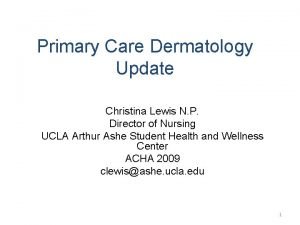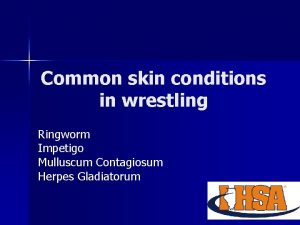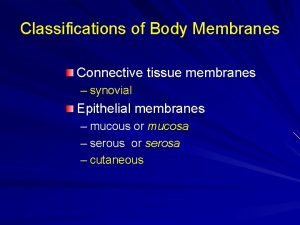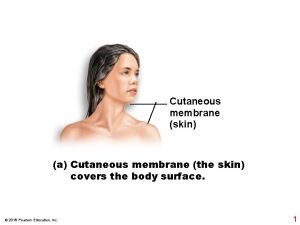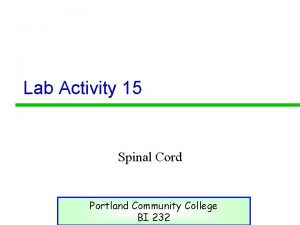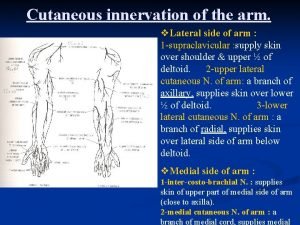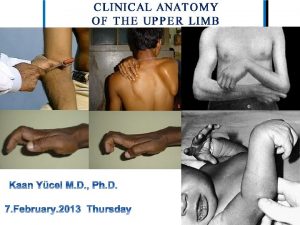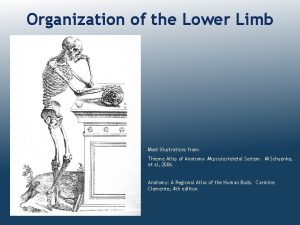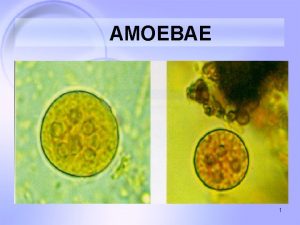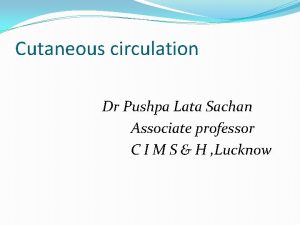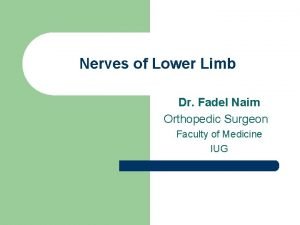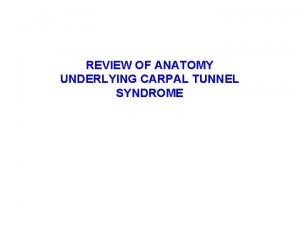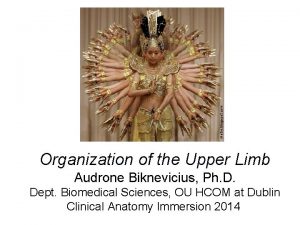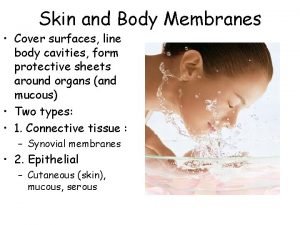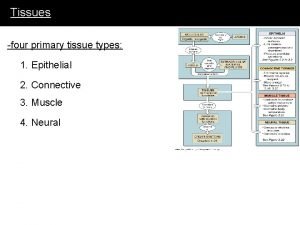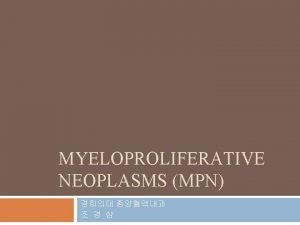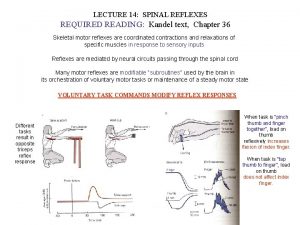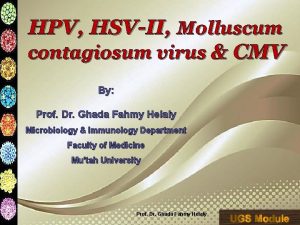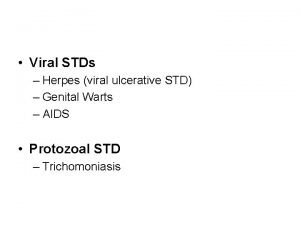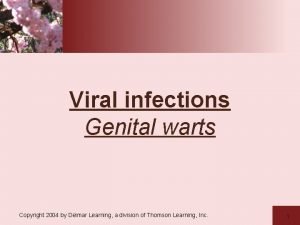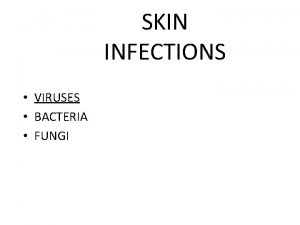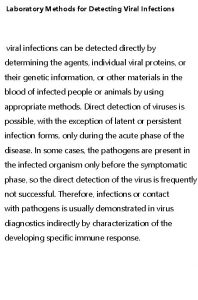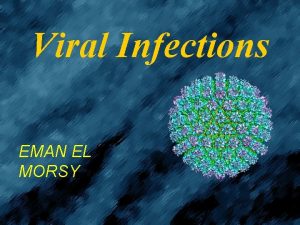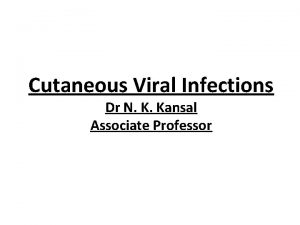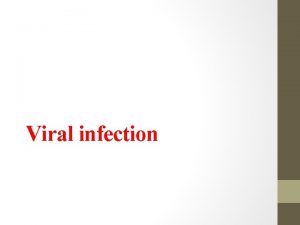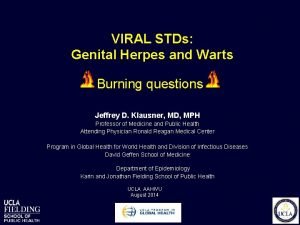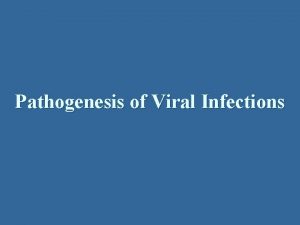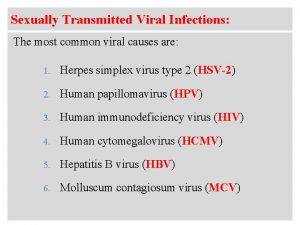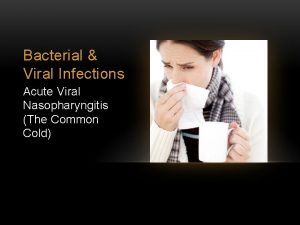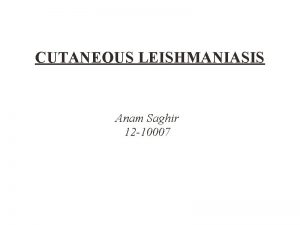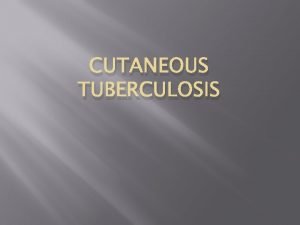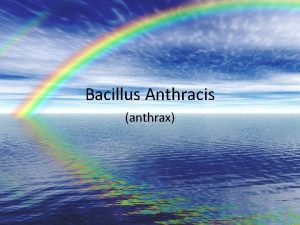Cutaneous Viral Infections Part 2 Molluscum Contagiosum Warts

















































- Slides: 49

Cutaneous Viral Infections Part 2 Molluscum Contagiosum. Warts. Prof. Hala Aly Ibrahim, MD Carmen I Farid, MD

Molluscum contagiosum Viral disorder of the skin and mucous membranes characterized by discrete, glistening, pearly white umbilicated papules which may show a central pore,

The causative agent is a DNA virus of the pox virus group. Seen most frequently in children between the ages of 3 and 16 , this disorder my appear at any age.

Transmission occurs by direct contact or by fomites

The lesions are both contagious and auto-inoculable.

In children they are generally located on the face, trunk, extremities

(especially in the axillae), and on the mucous membranes of the lips, tongue and buccal mucosa.

is In adults, involvement of the pubic, genital and perineal areas is common.

*Pear-shaped acanthosis. *Molluscoid bodies (round, eosinophilic anuclear cells).

Management of molluscum contagiosum Curettage ELectrocautery Needle transfixion Cryotherapy Chemical cautery(TCA, Carbolic acid) Immune-modulator: Imiquimod


Verrucae(Warts) Benign epithelial hyperplasia caused by infection with the papilloma virus of the papova group. HPV has more than 100 types.

Human papilloma virus Double stranded DNA virus, Family Papovaviruses



Koilinocyte

Early verrucae are usually round, discrete, papule s skin-colored, and pinpoint in size.

With time they grow to larger yellowish, grayish-black or brown lesions with a roughened papillomatous surface.

Verrucae spread by direct or indirect contact. IP days-2 yrs. Since local trauma promotes inoculation of the virus, most warts are seen on the fingers, hands, and elbows,

Clinical types of warts A. Non-venereal warts. B. Venereal warts.

1. Verruca vulgaris




2. Verruca filiform

3. Verruca digitiform


4. Verruca plana



Verruca plana Koebner’s Phenomenon

5. Verruca plantaris Located at pressure points. Painful. Single or multiple(mosiac). Leveled with sole skin. D. D corn, callosities.


along the perionychial folds, or on the plantar surfaces of the feet.

B. Venereal warts (Condyloma acuminata) l. Sexually transmitted form of anogenital lwarty growth caused by the human l papilloma viruses.

flat warts are probably oncogenic (type 16’ 18’ 31)

Large cauliflower warts are commonly non-onchogenic (type 6, 11)




Complications of warts General Transmission of infection(self, others) Recurrence Secondary bacterial infection. Specific certain types of HPV are precancerous CIN, VIN(HPV 16 -18) Laryngeal papillomata N. B A pregnant lady with V. warts should be delivered by CS.

Risk factors for malignant transformation HPV infection alone does not cause malignant transformation of infected tissue. Cofactors, such as tobacco use, ultraviolet radiation, pregnancy, folate deficiency, and immune suppression (Drugs, HIV)

percentages of cancers caused by oncogenic HPV Cervical cancer – 95% Anal cancer - 90% Vulvar cancer - 40% Vaginal cancer - 40% Oropharyngeal cancer - 12% Oral cancer - 3%

HPV Vaccines Gardasil (quadrivalent vaccine for HPV types 6, 11, 16, and 18. ) Administered IM at 0, 2, and 6 months. Cervarix (bivalent vaccine for HPV 16, 18 types).


Management of warts A. Destructive measures. B. Immunomodulatory measures.

A. Destructive measures 1. Physical: *Electrocautery. *cryotherapy. *LASER. *Surgical excision. 2. Chemical cautery: cautery * TCA, Glacial acetic acid. *Formalin sol. , Salisylic acid Powder(planter warts) 3 -Cytotoxic agents: agents A-Podophylline 25%, podophyllotoxin(genital warts). N. B podophylline is contraindicated in pregnancy(IU foetal death) B- 5 FU

B. Immunomodulatory measures Interferon. Levamisole. Imiquimod (acts through stimulation of T-helper cells via activation of pathogen recognition receptors) PPD of tuberculin, candidin (intralesional) Zn supplementation in high doses.

Thanks for your attention, Good luck, Prof. Hala Aly Ibrahim, MD.
 Molluscum contagiosum dermnet
Molluscum contagiosum dermnet Mulluscum contagiosum
Mulluscum contagiosum Genital warts
Genital warts Neurosiphyllis
Neurosiphyllis Methotrexate and yeast infections
Methotrexate and yeast infections Genital infections
Genital infections Storch infections
Storch infections Bacterial vaginosis
Bacterial vaginosis Opportunistic infections
Opportunistic infections Salmonella life cycle
Salmonella life cycle Storch infections
Storch infections Postpartum infections
Postpartum infections A bacterial std that usually affects mucous membranes
A bacterial std that usually affects mucous membranes Classification of acute gingival infections
Classification of acute gingival infections Bone and joint infections
Bone and joint infections Opportunistic infections
Opportunistic infections Genital infections
Genital infections Retroviruses and opportunistic infections
Retroviruses and opportunistic infections Johnson and johnson botnet infections
Johnson and johnson botnet infections Tinea unguium
Tinea unguium Cutaneous membrane
Cutaneous membrane Dangerous area of scalp is which layer
Dangerous area of scalp is which layer Cutaneous innervation of sole of foot
Cutaneous innervation of sole of foot Double life amphibians
Double life amphibians Connective tissue membranes
Connective tissue membranes Cutaneous membrane
Cutaneous membrane Gray commisure
Gray commisure Lateral side of arm
Lateral side of arm Vdeepl
Vdeepl Palmar cutaneous branch of median nerve
Palmar cutaneous branch of median nerve Femoral triange
Femoral triange Lateral plantar nerve
Lateral plantar nerve Glands in integumentary system
Glands in integumentary system Entamoeba histolytica motility
Entamoeba histolytica motility Facial vein
Facial vein Lumbo sacral plexus
Lumbo sacral plexus Cutaneous membrane definition
Cutaneous membrane definition Triple response and cutaneous circulation
Triple response and cutaneous circulation Lateral cutaneous nerve of thigh
Lateral cutaneous nerve of thigh Lateral cutaneous nerve of forearm
Lateral cutaneous nerve of forearm Sensory innervation of foot
Sensory innervation of foot Harold varmus
Harold varmus Carpal bones
Carpal bones Ulnar nerve innervation
Ulnar nerve innervation Cutaneous membrane
Cutaneous membrane Cutaneous membrane
Cutaneous membrane Four primary tissue types
Four primary tissue types Cutaneous receptors
Cutaneous receptors Cutaneous mastocytosis
Cutaneous mastocytosis Cutaneous reflex
Cutaneous reflex
